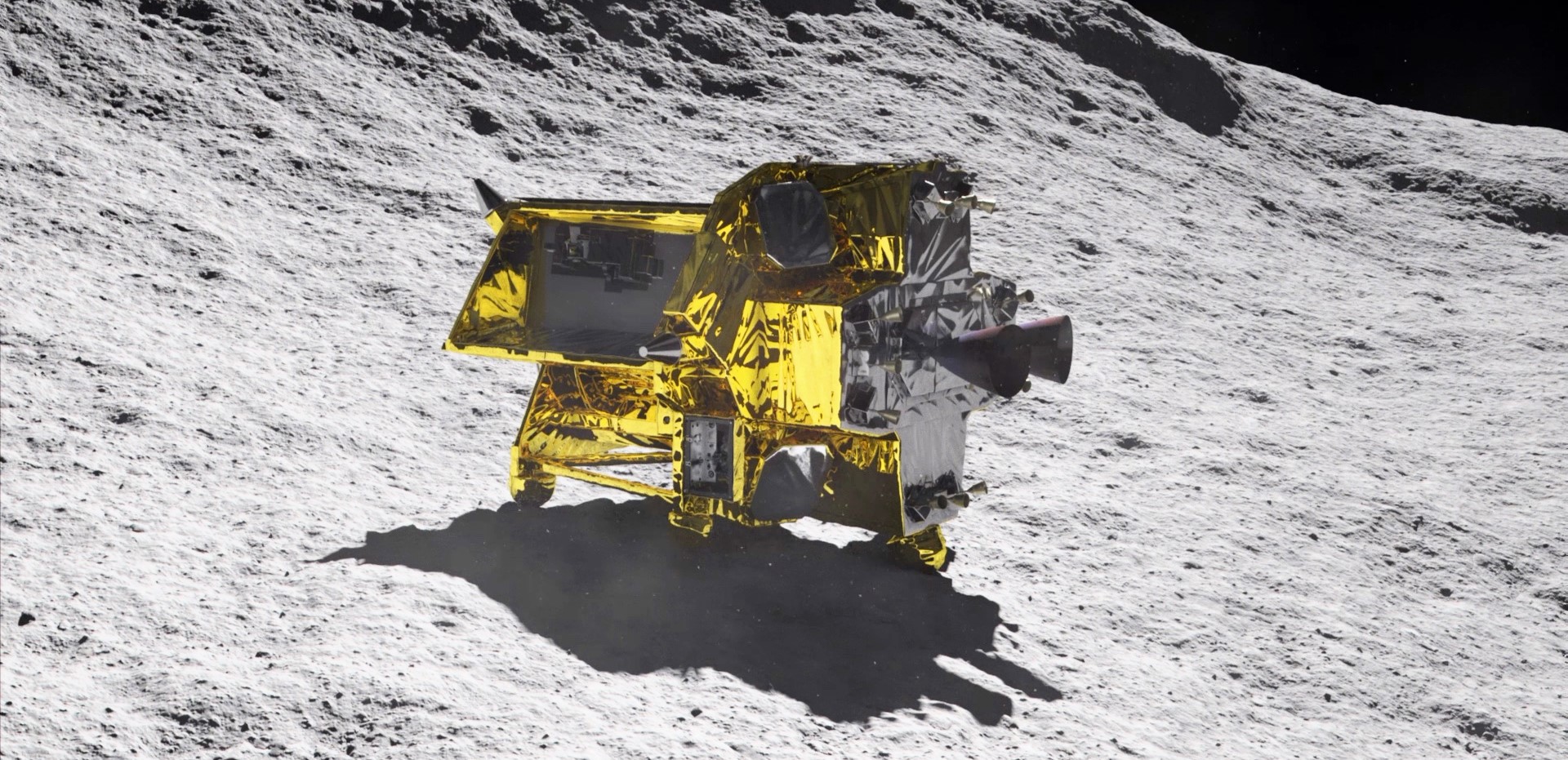Update for Jan. 21: The Japan Aerospace Exploration Agency shut down its moon lander to conserve battery power, but says the lander might be recharged and revived if sunlight hits the solar cells at the right angle.
Japan has become the fifth nation to land a functioning robot on the moon, but the mission could fall short of complete success due to a problem with the lander’s power-generating solar cells.
The Smart Lander for Investigating Moon, or SLIM, was launched along with an X-ray space telescope called XRISM from Japan’s Tanegashima Space Center in early September — and after weeks of in-space maneuvers, SLIM touched down today at 1520 GMT (10:20 a.m. ET Jan. 19, or 12:20 a.m. JST Jan. 20).
The Japan Aerospace Exploration Agency reported that the landing was successful. During a news briefing, Hiroshi Kuninaka, director general of JAXA’s Institute of Space and Astronautical Science, said the achievement marked “a major milestone” in Japan’s effort to send spacecraft to the moon, and eventually to Mars.
Kuninaka said SLIM was able to communicate with Earth and respond to commands. “However, it seems that the solar cells are not generating electricity at this point in time,” he said. “And since we are not able to generate electricity, the operation is being done using batteries alone.”
Mission controllers prioritized efforts to transmit the data stored on the lander back to Earth before the batteries ran out. SLIM was expected to lose power within hours if the solar panel problem couldn’t be fixed.
Kuninaka said the problem could have arisen because the solar cells weren’t properly aligned toward the sun. “We are trying to analyze the data that we’re gathering at this point in time and analyzing the status,” he said.
The lander was designed to make a precision touchdown near Shioli Crater, in a region of the moon not far from where the Apollo 11 and Apollo 16 landings took place more than 50 years ago. SLIM’s objective was to land within 100 meters (330 feet) of the targeted landing spot. The plan for an ultra-accurate moonshot explains why SLIM came to be called “Moon Sniper.” Kuninaka said mission managers would need “a little more time” to confirm how close SLIM came to the target.
He also said two mini-rovers, known as LEV-1 and LEV-2, were successfully deployed during SLIM’s descent to the surface. LEV-1 is built to capture imagery and record temperature and radiation levels as it hops around the surface. LEV-2 has the shape of a deformable sphere, and is designed to roll around the surface to take pictures.
“If LEV-1 and LEV-2 are functioning properly, then SLIM’s photos and images have been taken by LEV-1 and LEV-2. I believe such data is now being sent to us,” Kuninaka said.
Despite the power problem, SLIM’s successful landing was a welcome development for JAXA’s space exploration program. It added Japan to a short list of countries that have guided robotic spacecraft to soft landings on the moon — a list that also includes the U.S., Russia, China and India.
Other recent developments have demonstrated that putting a robot on the moon isn’t easy. This week, for example, Astrobotic’s Peregrine lunar lander fell back to Earth after a propellant leak ruled out a moon landing.
Last year, a different type of commercial lander — built by a Japanese startup called ispace — failed during its descent to the lunar surface. Russia’s Luna-25 mission also ended with a crash landing on the moon last year. In 2022, a Japanese mini-probe called Omotenashi failed to function after its deployment during NASA’s Artemis 1 moon mission. And in 2019, the Israeli-built Beresheet moon probe failed to stick its landing.
In contrast, India’s Chandrayaan-3 lander/rover mission and China’s Chang’e missions stand out as notable successes in the recent wave of moon exploration efforts.

